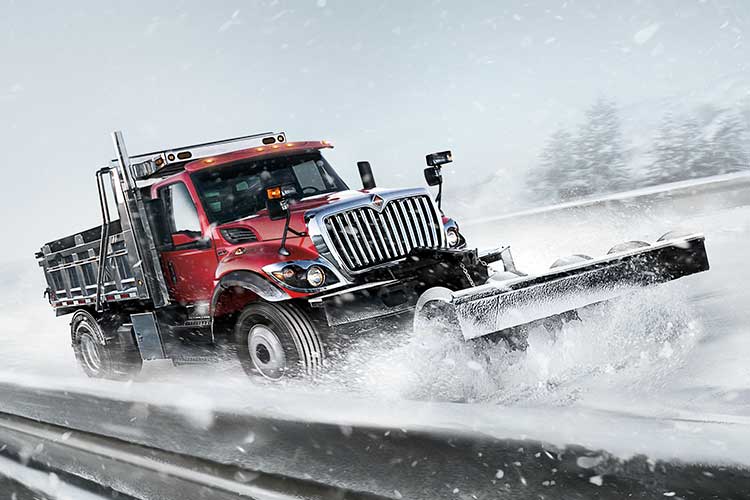At the end of the year, you should evaluate your safety and loss control program to determine your performance over the year. Where do you stand compared to last year and the year before? Ongoing analysis programs are vital to a proactive and productive safety and loss control program. It always amazes me that companies need to determine their accident frequency rate and how it compares to pass years. Accident frequency should be specified annually, no less than quarterly, to determine trends and be proactive in controlling losses. Accident frequency rates can be calculated by multiplying the total number of accidents by one million and then dividing by the unlimited number of miles for the same period. The accident frequency rate can be determined for DOT recordable, preventable recordable, and non-preventable by region, fleet, driver supervisor, injury, etc. However, accident frequency rates are just one piece of the overall safety analysis program that is in place to provide you with a sense of direction of where your program is going. Other areas of your internal analysis program should include driver turnover frequency, DOT violation analysis (Hours of Service, Drug and Alcohol, driver file), OSHA violations, workers’ compensation injuries, etc. Another analysis tool that you should review monthly is your CSA SMS data provided to you by the FMCSA https://safer.fmcsa.dot.gov/ or http://csa.fmcsa.dot.gov
A Proactive, proper safety and Loss control program will adequately address the following areas:
- Driver Selection
- Driver Recruiting
- Carrier-based training
- Management-driver communications
- Driver safety-performance evaluation
- Safety incentives, Behavior-based safety
- On-board safety monitoring
- Event-data recorder
- Accident investigation
- Improved driver scheduling and dispatching
- Fatigue management
- Carrier-based medical programs
- Advanced safety technologies, Industry-based safety standards, and certification
- Preventive maintenance and vehicle inspection
Don’t Crowd the Plow
Much of the update shows that New York and New England will experience a significant snowstorm. During winter storms, snowplows work around the clock to make roads passable. These large vehicles can present a hazard for drivers who follow too closely. Observe these tips to stay safe while giving snowplow operators room to do their jobs.
- Keep well back from snowplows.
- Plow drivers can't see directly behind their trucks. Sometimes they must stop or back up. Staying a safe distance behind a snowplow will protect you from possible injury and protect your car from sanding material that plows spread on slick roadways.
- Plow drivers can't see directly behind their trucks. Sometimes they must stop or back up. Staying a safe distance behind a snowplow will protect you from possible injury and protect your car from sanding material that plows spread on slick roadways.
- Know where the snowplow is on multi-lane highways
- The plow could be in either lane or on the shoulder. Watch for snowplows on interstate ramps and "authorized vehicle only" turnarounds.
- The plow could be in either lane or on the shoulder. Watch for snowplows on interstate ramps and "authorized vehicle only" turnarounds.
- Never drive through a snow cloud or whiteout conditions.
- You can't be sure if such conditions are caused by crosswinds or by a snowplow, so be patient. Snowplow operators periodically pull over to allow traffic to pass.
Snowplow operators are incredibly safety-conscious, but they need your help. Stay back and let them safely do their job of clearing the road for you. Don't take a chance. Don't crowd the plow!
Holiday Driving Tips
Holiday events and celebrations can be exciting times for family and friends to get together.
But get-togethers with family and friends can be tragic when people are killed or injured in traffic crashes. As the holiday season is approaching, drivers need to be mindful of actions that will make their holiday travels safer. Drivers can protect themselves and their passengers by following these holiday travel rules. Before your trip, ensure your vehicle is tuned up and in good shape for travel. This is especially important for winter driving conditions. Restrain yourself and your passengers properly in seat belts and car safety seats. Remember, the rear seat is the safest place for children of any age to ride. Be flexible in setting your travel plans. Leave early if you can avoid the peak traffic hours. Change your schedule if snow is predicted during your travel time. It is better to reschedule your get-together than to risk the lives of traveling family or friends. Stay fresh and alert when driving. Take plenty of breaks, and do not push yourself to meet an unrealistic schedule. If you get tired, pull off the road into a rest area or business, get out of the car for some fresh air, buy something to refresh you or relax until you feel revived. If that doesn’t work, find a motel or campground where you can spend the night. Forty-one percent of fatal traffic accidents are single-vehicle crashes. These crashes most often occur during the late night/early morning hours and the late afternoon hours to tired drivers who have consumed alcohol or both. Keep your speed down. Give yourself plenty of time and distance to react to the traffic around you. Let impatient and aggressive drivers pass you or go through the intersection ahead of you so that you control the situation. Do not pass if you cannot see enough clear roads to pass safely. If there will be drinking at your holiday get-together, choose a designated driver who will remain alcohol-free. Because driving requires your full attention, pull off the road if you must use your cellular phone.
Alcohol, Drivers, and the Holidays!
Now is an excellent time to remind your drivers of the consequences of drinking during the Holiday season and what effect their actions can have on their CDL or operator’s license and, ultimately, their employment with your company. Advise your drivers to use caution when indulging in alcoholic beverages and have a designated driver to protect their license, job, and the motoring public.
The FMCSA regulations specify that a CDL driver, while operating any motor vehicle, is convicted of being under the influence of alcohol as described by state law and will be disqualified from driving a commercial motor vehicle for one year. A second conviction would disqualify the driver from operating a commercial motor vehicle for life.
When is Alcohol Use Prohibited?
Alcohol is a legal substance; therefore, the rules define prohibited alcohol-related conduct. Performance of safety-sensitive functions is not permitted:
- While using alcohol.
- While having a breath alcohol concentration of 0.04 percent or greater, as indicated by an alcohol breath test.
- Within four hours of using alcohol.
In addition, refusing to submit to an alcohol test or using alcohol within eight hours after an accident or until tested (for drivers required to be tested) is prohibited.











